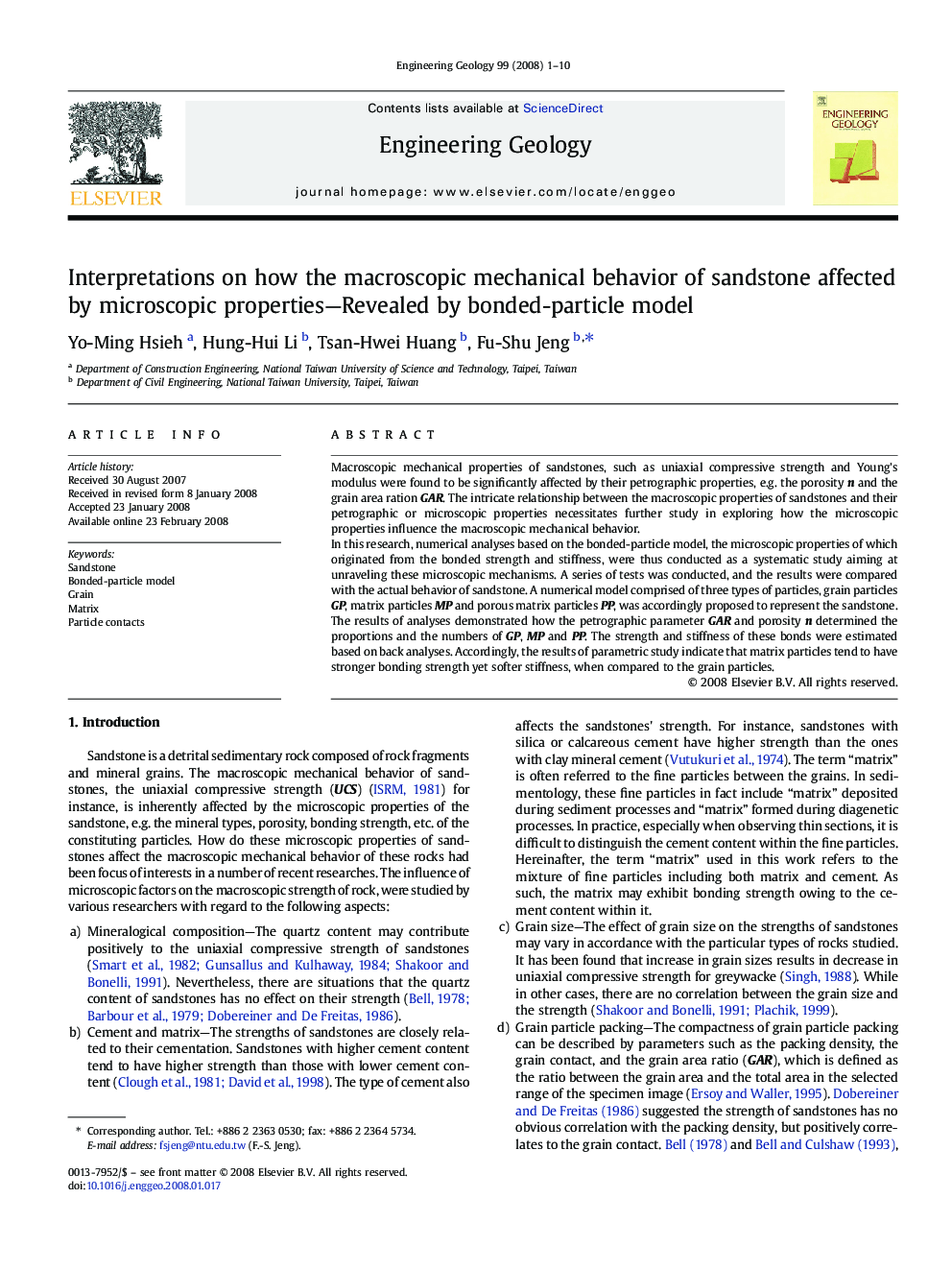| Article ID | Journal | Published Year | Pages | File Type |
|---|---|---|---|---|
| 4744878 | Engineering Geology | 2008 | 10 Pages |
Macroscopic mechanical properties of sandstones, such as uniaxial compressive strength and Young's modulus were found to be significantly affected by their petrographic properties, e.g. the porosity n and the grain area ration GAR. The intricate relationship between the macroscopic properties of sandstones and their petrographic or microscopic properties necessitates further study in exploring how the microscopic properties influence the macroscopic mechanical behavior.In this research, numerical analyses based on the bonded-particle model, the microscopic properties of which originated from the bonded strength and stiffness, were thus conducted as a systematic study aiming at unraveling these microscopic mechanisms. A series of tests was conducted, and the results were compared with the actual behavior of sandstone. A numerical model comprised of three types of particles, grain particles GP, matrix particles MP and porous matrix particles PP, was accordingly proposed to represent the sandstone.The results of analyses demonstrated how the petrographic parameter GAR and porosity n determined the proportions and the numbers of GP, MP and PP. The strength and stiffness of these bonds were estimated based on back analyses. Accordingly, the results of parametric study indicate that matrix particles tend to have stronger bonding strength yet softer stiffness, when compared to the grain particles.
